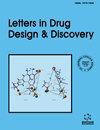一类天然来源的新型抗菌杂环化合物
IF 1.6
4区 医学
Q4 CHEMISTRY, MEDICINAL
引用次数: 0
摘要
摘要:为了减少合成杂环物质带来的不良影响和对抗抗菌素耐药性,人们对从植物中提取的天然抗菌剂越来越感兴趣,如酚类物质、儿茶酚、邻苯三酚、精油、甘草酸、咖啡酸、儿茶素、香豆素、原花青素、4-噻唑烷酮和生物碱。在过去的几十年里,使用天然存在的杂环类药物对抗革兰氏阳性(金黄色葡萄球菌、化脓性葡萄球菌、枯草芽孢杆菌、黑孢杆菌和蜡样芽孢杆菌)和革兰氏阴性(铜绿假单胞菌、大肠杆菌、肺炎克雷伯菌、寻常假单胞菌和婴儿假单胞菌)细菌已经成为越来越多研究的主题。本文综述了植物源性抗菌剂在提高食品微生物安全性方面的应用,以及氮基和氧基杂环化合物可能的抗菌活性。通过探索和利用这些化学物质的潜力,有可能找到治疗传染病的新药物,并解决抗生素耐药性带来的问题。为了最大限度地在食品中使用这些潜在的天然抗菌剂,需要对毒理学效应和潜在的添加剂和/或协同抗菌作用进行进一步的研究。本文章由计算机程序翻译,如有差异,请以英文原文为准。
An Emerging Class of Antimicrobial Heterocycles Derived from Natural Sources
Abstract: An energetic desire to reduce the undesirable effects brought on by synthetic heterocyclic substances and to combat antimicrobial resistance has led to an increase in curiosity in using natural antimicrobial agents derived from plants, such as phenolics, catechol, pyrogallol, essential oils, Lchicoric acid, caffeic acid, catechins, coumarin, proanthocyanidins, 4-thiazolidinone, and alkaloids. The usage of naturally occurring heterocycles against Gram-positive (S. aureus, S. pyogenes, B. subtilis, A. niger, and B. cereus) and Gram-negative (P. aeruginosa, E. coli, K. pneumonia, P. vulgaris, and S. infantis) bacteria has been the subject of increased investigation in past few decades. This review targets the use of plant-derived antimicrobials to increase the microbiological safety of food and the possible antimicrobial activity of nitrogen- and oxygen-based heterocyclic compounds. It is possible to find novel medications to treat infectious diseases and address the issues brought on by antibiotic resistance by exploring and utilising the potential of these chemicals. Additional research is desirable on the toxicological effects and potential additive and/or synergistic antimicrobial actions in order to maximise the usage of these potential natural antimicrobials in foods.
求助全文
通过发布文献求助,成功后即可免费获取论文全文。
去求助
来源期刊
CiteScore
1.80
自引率
10.00%
发文量
245
审稿时长
3 months
期刊介绍:
Aims & Scope
Letters in Drug Design & Discovery publishes letters, mini-reviews, highlights and guest edited thematic issues in all areas of rational drug design and discovery including medicinal chemistry, in-silico drug design, combinatorial chemistry, high-throughput screening, drug targets, and structure-activity relationships. The emphasis is on publishing quality papers very rapidly by taking full advantage of latest Internet technology for both submission and review of manuscripts. The online journal is an essential reading to all pharmaceutical scientists involved in research in drug design and discovery.

 求助内容:
求助内容: 应助结果提醒方式:
应助结果提醒方式:


